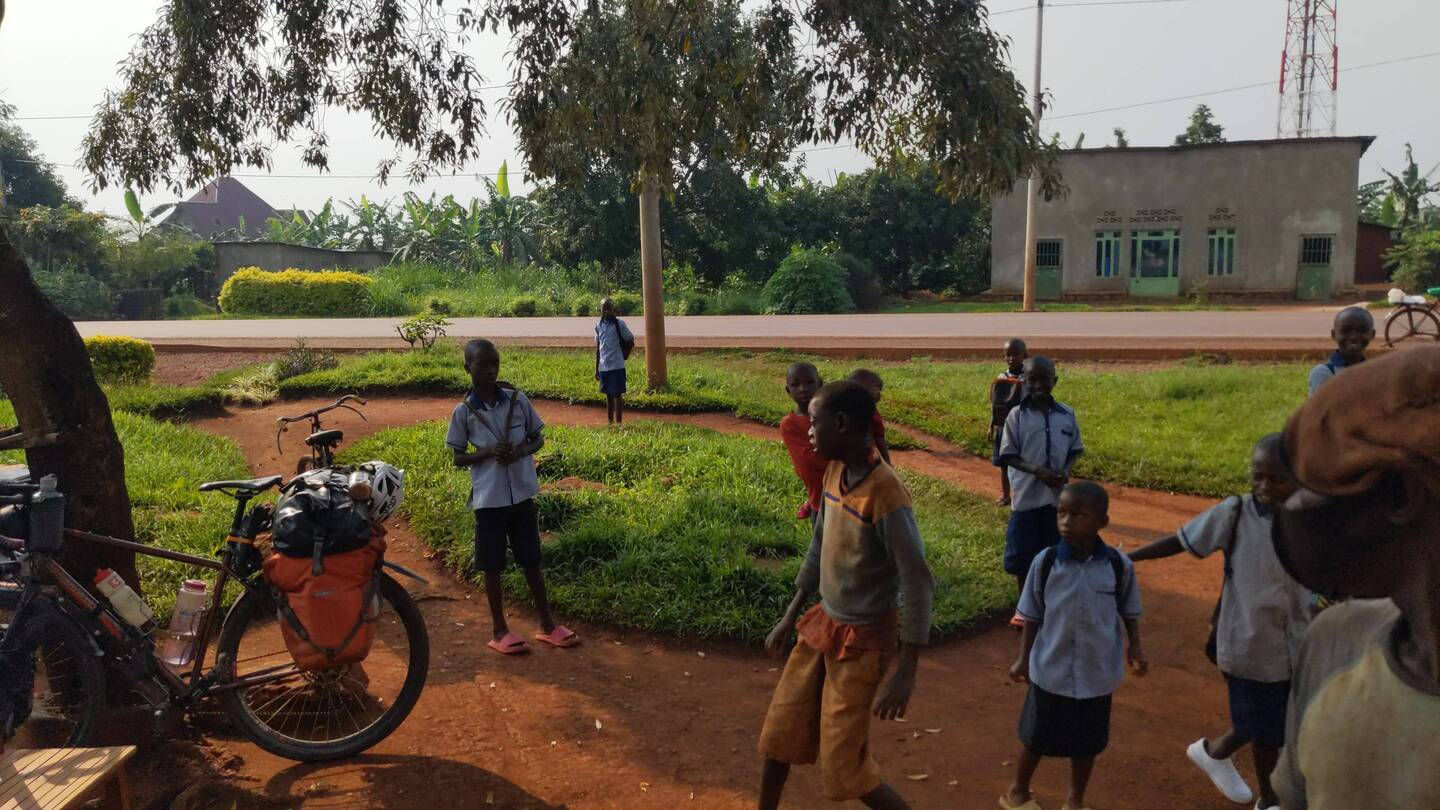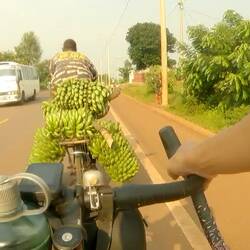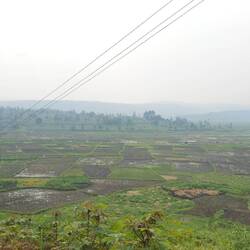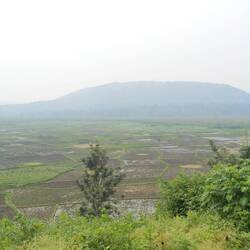- Show trip
- Add to bucket listRemove from bucket list
- Share
- Jan 10, 2024, 5:24pm
- ☁️ 24 °C
- Altitude: 1,432 m
 RwandaKigaliKiyovuNyarugengeRwampara1°57’1” S 30°4’50” E
RwandaKigaliKiyovuNyarugengeRwampara1°57’1” S 30°4’50” E
Into rwanda
 January 10 in Rwanda ⋅ ☁️ 24 °C
January 10 in Rwanda ⋅ ☁️ 24 °C
Can I talk about rwanda without beginning about the genocide and the atrocious modern history of the country? I cannot, but I will talk about the history in the next footprint; I had to mention it, as it is something that is just too overwhelming.
From Kigali to Rwanda was a long haul, and one I was not particularly looking forward to, as it is just one long route for 300 km. I did the first day, climbing 1526 meters, and decided to experience a different important part of the culture here: bus rides. And that stands out as a highlight. The bus left at 6 and within 10 minutes we were on unpaved road of varying quality—sometimes very good, sometimes very poor. And on the poor sections you get tossed around so much that Jim Carrey’s impersonation does not do justice: you really get car sick from the speed they go over bumps. The only thing I could focus on was breathing, and to grin and bear it. Another “experience”.
I did suffer from some diarrhoea that day but I am pretty sure that cannot be caused by bus rides; I did have to spend the next day in Nyakahura, where I got to taste the local (rather horrible) robusta coffee. And experience an amazing market where everyone gazes at me, but always in a friendly manner. I really got to like the openness of Tanzanians.
On to Rwanda: had to wait 20 minutes for the visa because everything is so slow there and got all my bags checked; I filmed everything for my reference later. He did not want to check my undies. At first Rwandans seemed a bit distant and sometimes talking behind my back, and not openly like in Tanzania. They also speak another different language, sometimes without English, so my shouts of “mambo vipi?!” Where frequently left not understood.
But the next day I got to experience the most attention I have gathered so far. I just went for tea somewhere, and suddenly there were 20 or 30 kids standing around me and my bike; they kept standing there when I went inside, and were just too curious that there was mzungu there. Yeah, they borrowed “mzungu” from swahili. Then when cycling, I got support by a banana crew, and sooo many young kids who wanted to run with me, wanted high fives, and yelled “good morning!” All day long. Pretty amazing support to be honest. Unfortunately I didn’t capture it on video properly, and I have trouble uploading, so you have to trust my word until later.
And they run and cycle fast by the way, and there are a lot of cyclists here. Plus pretty good roads most of the time and many, many, many hills.
That was Tuesday. Tuesday evening I got shown around my a local kid in Ramiro, with many homeless kids shouting “give money, give money!” which is a horrible experience: they were left on the street when their (single) parent’s could not provide for them, and now beg on the street…
Lastly, on Wednesday something changed: not a single cry of mzungu, no kids running alongside, just one or two that greeted me. I got nearer to Kigali—maybe that’s it—or they just only do certain things on Tuesdays. But I visited a horrible memorial site for the genocide which I will talk about next time.Read more



































Traveler Mutzig is a superior quality Rwandan beer. Master brewed according to its original European recipe with the highest quality local and imported
Mutzig is a superior quality Rwandan beer. Master brewed according to its original European recipe with the highest quality local and imported
Traveler Ze hebben hier wel lekker bier. Maar niet dit. Heineken en Amstel (!) Is hier overal te koop trouwens.
Traveler Rice fields
Rice fields